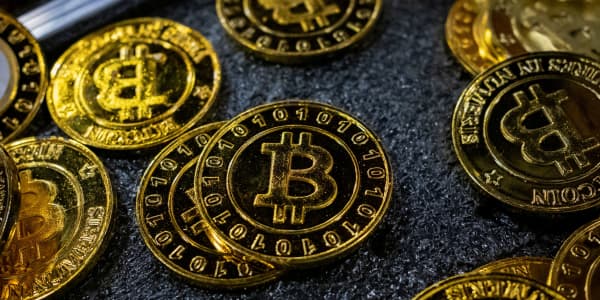When companies do reverse splits on their shares, it's often seen as a Hail Mary pass by a stock that's circling the drain. When exchange-traded funds try the same move, it's often cheered.
That's yet another unusual feature of the ETF world, an industry that's rapidly approaching $2 trillion in assets.
There has been a steady stream of reverse splits in 2014, among the most recent being ProShares' announcement that it was performing a 1-for-4 split on 10 of its inverse and leveraged products. While many of the firm's short funds have declined in price since the Oct. 15 reverse splits, that's primarily because the sectors the funds covered have gained with a rising stock market. Conversely, those "short" funds benefit from market declines. Otherwise, the funds have shown little damage from the move.
A normal split sees investors get multiple shares per each they hold. An inverse does the opposite and is often used to prop up flagging prices for a struggling company.

In the case of Vanguard's popular S&P 500 ETF, a reverse saw share prices soon double, as pointed out in an analysis at ETF.com. While the actual price doubled, the value for holders was the same because of the reduced share count. Still, the ETF has risen more than 4 percent in split-adjusted terms since the Oct. 24 1-for-2 split.
Read MoreInvestors flocking into index funds—here's why
The article notes that the ProShares reverse was part of a year in which it has done the same for 26 funds in its $26.3 billion ETF portfolio. Direxion, which has about $8.4 billion under management, has done eight this year.
The reasons why inverse splits are different for ETFs are several-fold: At their heart, they help reduce trading costs. If an investors wants to buy, say, $10,000 worth of a certain fund, a higher price means fewer lots need to trade and thus less cost per transaction.
ETFs, of course, are funds that usually track indexes but trade like stocks, unlike mutual funds.
Read MoreThese advisors hope for more volatile times
There's also the issue of spreads—higher share prices mean smaller spreads on a relative basis. In other words, a 1-cent trading spread is a larger part of a $10 fund than it is a $100 fund.
In a business that constantly touts its low cost, every little bit helps.
Finally, a higher share price benefits leveraged funds, or those that move in multiples of the indexes they track. If a particular fund has been a wrong-way bet and is seeing its price fall precipitously, that can decrease its ability to accurately reflect its index—a phenomenon called "tracking error."
Read MoreUnique ETFs worth the risk?
As ProShares explains on its site:
ProShares believes it is in our shareholders' best interests to execute splits and reverse splits from time to time to keep share prices within efficient trading ranges, and to seek to avoid low share prices. Splits help reset share prices to a range that helps maintain liquidity, especially if the price gets too expensive relative to other choices in the marketplace.
Reverse splits may help reduce bid-ask spreads. For funds with a lower share price, bid-ask spreads represent a higher percentage of the transaction price than for higher-priced funds, which can increase both costs and volatility—even when the spread is higher. ProShares believes a reverse split can adjust the share price to a more cost-effective level for the fund's shareholders, and therefore it is in our shareholders' best interest to do so.





